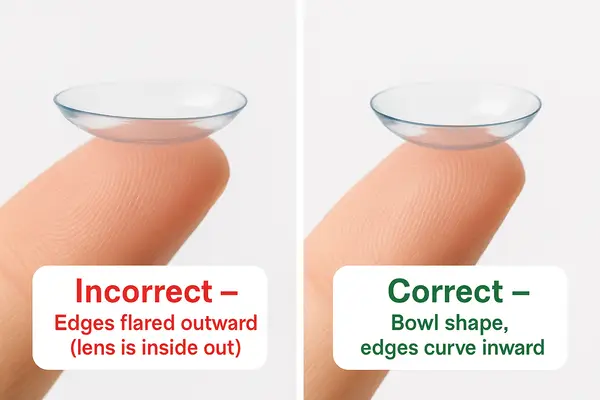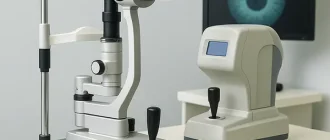Putting in contact lenses isn’t just a hygiene ritual—it’s the cornerstone of eye health for over 45 million Americans who wear them daily. Done wrong, it can lead to serious issues like corneal abrasions or infections. A study by the CDC found that nearly 1 in 5 contact lens-related eye infections result in some form of eye damage. That’s no joke.
Contact Lens Insertion Difficulty Scale
Compare how different lens types vary in ease of use, adaptation time, and risk of error.
Soft Lenses
Best for beginners. Easy to insert, quick to adapt, and low error rate.
RGP Lenses
Smaller, harder to handle. Needs precise placement and longer adaptation.
Scleral Lenses
Large and complex. Requires tools and technique. High learning curve.
Hybrid Lenses
Combines features of soft and hard lenses. Moderate difficulty across the board.
Source: eyexan.com
Whether you’re new to lenses or have been popping them in since your high school prom, getting the technique right for different types of lenses—soft, hard, scleral, or hybrid—is key to comfort, clarity, and eye safety.
Soft Contact Lenses: The Crowd Favorite
Step-by-Step Insertion
- Wash Your Hands Thoroughly: Use soap and water, dry with a lint-free towel.
- Place the Lens on Your Index Finger: It should form a perfect bowl shape—edges should curve upward, not flare out.
- Inspect for Damage or Debris: Look for rips, lint, or calcium deposits.
- Hold Your Upper Eyelid: With your non-dominant hand to prevent blinking.
- Pull Down Lower Eyelid: Using your middle finger of the dominant hand.
- Gently Place the Lens on the Eye: Look straight ahead or slightly upward.
- Blink Slowly: Allow the lens to settle.
Pro Tips
- Use a mirror placed flat on a table for better angle visibility.
- If the lens feels uncomfortable, remove, rinse with solution, and try again.
Accuracy Rating: 9/10 — Very user-friendly
Average Cost of Supplies: $30–50/month (solutions + lenses)
Fun Fact: Daily disposables reduce the risk of eye infections by up to 50% compared to monthly lenses ⧉.

Rigid Gas Permeable (RGP) Lenses: The Precision Tools
Insertion Method
- Same Hand Hygiene: It never changes.
- Wet the Lens with Solution: Don’t insert dry!
- Use a Tripod Technique: Balance the lens on your index finger, with your thumb and middle finger stabilizing.
- Keep Eye Wide Open: Use both hands to control lids.
- Place Directly on the Cornea: No sliding like with soft lenses.
- Blink Gently: Let the lens center naturally.
Unique Challenges
- Smaller diameter makes them harder to handle.
- Takes longer to get used to—usually 1–2 weeks.
Accuracy Rating: 8/10 — Requires precision
Cost Range: $100–300/pair; replacements last 1–2 years
According to Reyus Mammadli, medical consultant, “RGP lenses offer superior oxygen permeability, which makes them an excellent choice for people with dry eyes or high prescriptions.”
Scleral Lenses: Big and Bold
Insertion Protocol
- Fill the Lens Bowl with Sterile Saline: These lenses must be full before inserting.
- Use a Plunger or Stand Mirror: Due to their size (15–24 mm or 0.6–0.95 in).
- Lean Forward: Position your face parallel to the floor.
- Open Eye Widely: Both lids must be fully apart.
- Insert Lens Directly Over Iris: The fluid keeps it comfy.
Why They’re Special
- Ideal for keratoconus or post-surgical eyes
- Can mask severe corneal irregularities
Accuracy Rating: 7.5/10 — Insertion has a learning curve
Cost Estimate: $700–2,000 per pair, often custom-designed
A 47-year-old woman from Phoenix, AZ, who had LASIK complications, struggled with intense light sensitivity and fluctuating vision for over two years. She had tried various treatments, including medicated drops and custom glasses, with minimal relief. After switching to custom-fitted scleral lenses, she described the change as “a second chance at vision”—finally being able to drive at night and read comfortably again without the constant halo effect.
Hybrid Lenses: The Best of Both Worlds?
Application Steps
- Handle Gently: Soft skirt is fragile.
- Insert Like an RGP: Focus on centering the rigid center.
- No Saline Needed in Bowl: Unlike scleral.
- Ensure Edge Seals Properly: Prevents lens movement.
Pros and Cons
- Combine comfort of soft with clarity of hard lenses
- Trickier to insert than they look
Accuracy Rating: 8.5/10 — Intermediate difficulty
Cost Estimate: Around $500–900 per pair
As noted by the American Academy of Ophthalmology, hybrid lenses are particularly effective for patients with astigmatism or corneal irregularities ⧉.
Common Mistakes to Avoid
- Not Drying Hands Properly: Water can harbor microbes like Acanthamoeba
- Mixing Up Left and Right Lenses: Mark cases clearly
- Skipping Lens Inspection: A tiny tear can cause major irritation
- Using Tap Water to Rinse: Never! Use only recommended solutions ⧉
A 29-year-old man from Orlando, FL, was on a business trip when he realized he’d forgotten his contact lens solution. Thinking it would be harmless, he rinsed his lenses with hotel tap water. Within 24 hours, he experienced redness, pain, and blurred vision. An urgent care doctor diagnosed him with a corneal abrasion likely caused by Acanthamoeba contamination. The treatment required antibiotics and discontinuing lens use for over a week. He now travels with a backup kit—lesson learned the hard way.
Top 5 Contact Lens Insertion Mistakes — And How to Fix Them
Avoid discomfort and infections by correcting these common lens handling errors.
1. Not Washing Hands Properly
Mistake: Touching lenses with unwashed or wet hands introduces bacteria and microorganisms like Acanthamoeba.
Fix: Wash hands with soap and water for 20 seconds, dry with a lint-free towel before handling lenses.
2. Using Tap Water to Rinse or Store Lenses
Mistake: Tap water can contain microorganisms that damage your cornea and increase infection risk.
Fix: Always use sterile, multipurpose contact lens solution approved for disinfection and rinsing.
3. Mixing Up Left and Right Lenses
Mistake: Swapping lenses reduces visual clarity and can transfer bacteria between eyes.
Fix: Clearly label your lens case, always start with the same eye, and handle one lens at a time.
4. Inserting Lenses Inside Out
Mistake: A flipped lens feels uncomfortable, won’t stay centered, and may cause eye irritation.
Fix: Check lens shape before inserting — it should look like a smooth bowl, not a flared saucer.
5. Skipping Lens Inspection
Mistake: Invisible rips, dust, or protein deposits can cause serious irritation or even corneal scratches.
Fix: Examine lenses under light before insertion. Discard damaged or visibly dirty lenses immediately.
Source: eyexan.com
Practical Comparison Table
| Lens Type | Ease of Use | Comfort | Cost Range | Replacement Cycle |
|---|---|---|---|---|
| Soft | Easy | High | $30-50/month | Daily/Monthly |
| RGP | Moderate | Medium | $100-300/pair | 1-2 Years |
| Scleral | Hard | High | $700-2000 | 1-2 Years (custom) |
| Hybrid | Moderate | High | $500-900 | 6-12 Months |
Editorial Advice
When it comes to inserting contact lenses, technique isn’t just a minor detail—it’s the whole show. Reyus Mammadli, medical consultant, emphasizes the importance of adapting your method to your lens type, saying, “Once you personalize the process, you dramatically reduce discomfort and the risk of complications.”
Which Contact Lens Is Right for You?
Match your eye condition or lifestyle to the best lens type, with visual comparisons for clarity, comfort, and complexity.
Dry Eyes or Long Screen Time
Recommended Lens: Rigid Gas Permeable (RGP) or Scleral Lenses
Active Lifestyle or Sports
Recommended Lens: Daily Soft Lenses
Post-Surgical or Irregular Corneas
Recommended Lens: Custom Scleral or Hybrid Lenses
Astigmatism or Complex Prescriptions
Recommended Lens: Hybrid or Toric Soft Lenses
Low-Maintenance, First-Time Wearers
Recommended Lens: Daily Disposable Soft Lenses
Source: eyexan.com
From soft to scleral, each lens has its own quirks. Start slow, stay sterile, and use tools like insertion plungers or stand mirrors to boost accuracy. And if all else fails, don’t hesitate to ask your eye care provider for a live demo—it’s not cheating, it’s smart.
Happy lensing!





